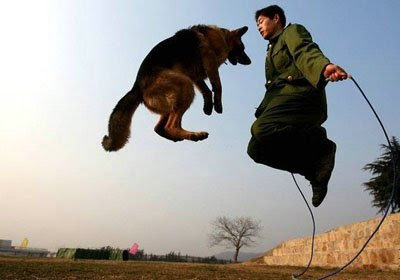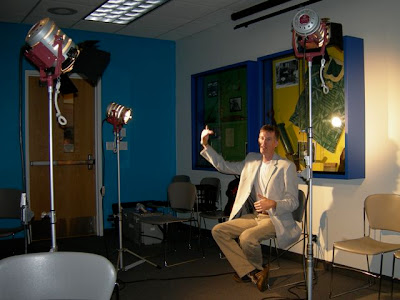
The first rule of filmmaking:
Audio is the most important element in your film.If the viewer of your ScreenLabs Challenge short film cannot hear what your characters are saying they will shut it off and stop listening. Like a chef who serves raw chicken or cold cup of coffee, you've totally lost the audience and the movie is basically over.

Getting great audio starts in the field on location when you are shooting your film for the ScreenLabs Challenge. Capturing quality audio requries that you
know your equipment, have a decent microphone appropriate to your action and constantly monitor the levels with the use of headphones. While a great boom mic and experienced operator is preferable in most locations, some dialogue can only be captured using lavaliere mics on location
(photo by Julia Ryner12)Good audio also starts in the script. Take the time to read your script through the prism of the audio events. There are three levels of notation that need to be marked on your script and closely monitored by an experienced sound technician or someone with a keen ear for audio separation.
First, the spoken lines of the actors need to be captured cleanly and without interruptions. The sound tech should be listening for actors who are dropping levels at the end or beginning of their lines and slurred words. Also, it is important to note when an actor jumps on the line of another actor making both words incomprehensible. Clean separation between spoken lines is critical here.
Second, there is
the natural sound of the environment -- if you are in a gymnasium you will need the sounds of the shoes on the floor, balls bouncing against the floor or walls (to match the action) or an airport will have the sounds of airplanes taking off and landing or voices over an intercom announcing flights arriving and leaving. Mark up all these points in the script. Capture each distinctive sound clean and when editing add them to the appropriate places to enhance the film story.

The ambient quality of the location is important to consider in relation to the mood you want to create in the scene you are shooting there. Scouting locations just for sound can be critical in pre-production. If you find there is a quality of an echo or if at the witching hour you draw the mic closer to the actors voice and capture a more throaty quality of the speech or the crackle of leave and branches under foot as the character walks, it can add suspense if it enhances the story being told. Take time to stand in different parts of Prospect Park in proximity to the Tower and just listen. Then shout, clap, or whistle and listen to where the sound goes depending on which side of the park you in, might give you qualities to capture for your story.
Third,
sound events are crucial to the action on screen such as door slamming when a character is angry or water in the sink when a character washes their hands needs to be captured separately. Matching actions on screen to their sounds makes the story more vivid. Do you homework and mark them up in pre-production.
In the best circumstances, you will have an experienced audio location sound person who makes certain you have properly recorded the audio of your actors and the wild sound in each and every scene. At the very least, either you or a designated sound assistant will listen every second while rolling to the audio on the camera with a set of headphones that block out all other sounds.
When a plane, automobile or other unintended loud distracting noises occur it is the responsibility of the sound person to stop the action or alert the director that the sound has been compromised by noise interference in the take. Always do another take even if your actors gave incredible performances. Ask them to give it again.
In summary, the goal before leaving all shooting locations is to get good, clean, quality audio recording of the actors speaking their lines,
human caused audio events (car starting, door slamming, footsteps on wooden floor, toilet flushing, etc.) and
wild sound (the wind, water flowing, birds churping, clocks ticking), and
ambient noise (the white noise in a scene or shot that is present when not other sound event is occuring). Every one of these types of sound need to be recorded cleanly and separately in order to create an effective audio mix when editing your short film.
Constructing the right sound montage will greatly increase the believability of your story and enhance the relationships between the characters themselves, the surroundings and the moment they are living in the drama.

 Try to avoid static horizon/ground shots all the time where is camera is on a tripod pointing straightforward, or held at eye height looking at your actors. Think and plan for over head shots, low angels, high angels and camera movement that contribute to telling the story and not just added as an after-thought. Create wonderment and excitement within your frame and build it throughout scenes.
Try to avoid static horizon/ground shots all the time where is camera is on a tripod pointing straightforward, or held at eye height looking at your actors. Think and plan for over head shots, low angels, high angels and camera movement that contribute to telling the story and not just added as an after-thought. Create wonderment and excitement within your frame and build it throughout scenes.









